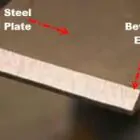The idea of “big data” is becoming more popular around the world and is becoming more important in welding technology. This means that the most important parts of a good production process are the documentation of welding data. And the ability to analyze it in depth. This is because people who really know their processes are the only ones who can optimize them. That too in a way that avoids mistakes and makes the most of them. With this in mind, Fronius made WeldCube, a system for keeping track of information and analysing it.
It’s all about big data when it comes to welding data documentation.
Do you write down and analyse the data you get from welding? If you said “no,” all we can say is that you should. No longer are only politicians and economists interested in big data. You can apply Welding technology in entirely new ways through the collection and processing of data. This means that keeping track of welding data and then analysing it are becoming more and more important in industrial manufacturing. A networked and automated production environment makes it easier for the user to get information from all the welding data they have. With a system of monitoring and analysing, mistakes and flaws can be found quickly, so processes can be made better. This means that companies can improve the power and efficiency of their machines, systems, and even their whole production lines.
Documenting and analysing welding data as a welding challenge?
There’s no doubt that keeping track of and analysing welding data is very important. But how do companies handle this step in a production environment where everything is digital and connected? How do they solve what seems to be a problem with welding without messing up their usual steps? In order to do this, Fronius made “WeldCube,” a system for keeping track of and analysing data.
Depending on how big the server is, WeldCube can connect up to 50 power sources. The browser-based software gathers information about things like current, voltage, wire speed, and welding speed. Users can then use this information to improve welding processes with the help of the data management system. A dashboard that can be changed and has different statistics and filtering options makes it easy to get an overview and makes sure the user always has the most important information at hand. Also, you can see the results not only on your computer, but also on your phone or tablet.
How analysis of data makes the welding world better.
It’s easy to explain the WeldCube: The software keeps track of the actual values of each weld seam. Its is so that you can compare them to the target values. Networking makes it possible to automatically record data not only for each machine, but also for each device’s parts. Most importantly, this makes it easier to see how each component is made and find out where it came from. By analysing gas, wire, energy, and filler metals, consumption rates can be made as efficient as possible.
A welding data documentation and analysis system also helps welding coordination staff a lot in companies that have to keep records. Before, the seam was only looked at with the naked eye, and all the paperwork had to be done by hand. Using an automated system like WeldCube saves time and money by doing these things for you. Not least because it helps with the process of quality assurance.
Another benefit of networked welding systems is that jobs, which are set parameters for a specific welding task, can be saved and moved to other devices. WeldCube can move this data in less than five minutes, while manually adjusting 15 welding systems could take up to two hours. You can even make a report on a component, easily with just three clicks.
Some of the most important things going on right now are networking, automation, and digitization in industrial production. The smart companies of the future won’t look at each step of production in isolation. But as a part of the whole. Together with other systems, welding data documentation and analysis will soon be an essential tool for a modern, digitally networked company. Simply put: Let’s get in touch!





